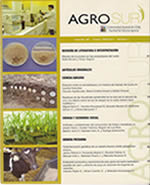Building Sustainability: An Experimental Approach to Analyze the Impact of Mixed and Single Grazing on Functional Groups of the Campos Ecosystem
Main Article Content
Abstract
The need to increase resources to support a growing global population disrupts the balance of ecosystems, especially those used for grazing. Among these is the Campos ecosystem, which includes the Campo Natural, occupying 57.23% of Uruguay’s territory (30-35°S, 53-58°W). This ecosystem is composed of grasses, herbs, sedges, shrubs, and legumes, and is dedicated to the commercial exploitation of sheep and cattle. In the search for the best balance between these herbivores for sustainable grazing, an experiment was conducted from March 2008 to September 2011, consisting of mixed and single grazing, with three sheep-cattle ratios and both species separately. The effects of grazing on the Campo Natural were recorded in the functional groups that represent the condition of the vegetation, with the best response observed under mixed grazing. In contrast, single-species grazing produced a different imbalance depending on whether sheep or cattle were involved, resulting in a loss of condition. The implications of these results for the sustainability of the system are discussed.
Article Details

This work is licensed under a Creative Commons Attribution-NonCommercial 4.0 International License.

